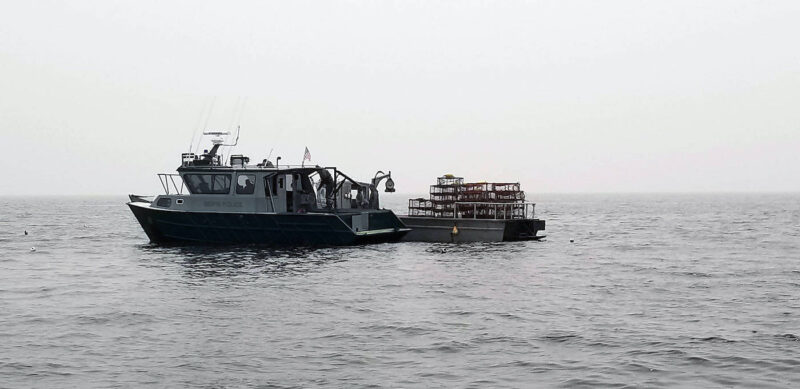Illegal fishing, seafood fraud costing Canada millions: study
Aquaculture seen as way of bolstering supply chain traceability standards to stop illegal fishing and seafood fraud.
By Fabian Dawson
SeaWestNews
Canadians are unwittingly spending up to $160 million a year on seafood caught through illegal, unregulated and unreported (IUU) fishing – including seafood potentially caught by victims of modern slavery states a new report by Oceana Canada.
The report featuring new data from fisheries economists also states that Canada’s weak seafood supply chain traceability standards are resulting in annual losses of up to $93.8 million in tax revenue and up to $379 million in revenue for Canadian seafood industry workers.
“Canada has inadequate traceability standards in place to regulate our seafood supply chain and prevent illegal fishing, seafood fraud and mislabelling,” said Sayara Thurston, Seafood Fraud Campaigner, Oceana Canada.
“The government must deliver on its mandate to implement boat-to-plate seafood traceability and avoid Canada being left behind in global best practices. It is in the best interests of the fisheries sector and consumers. Canadians deserve to feel confident that their seafood is safe, honestly labelled and legally caught.”
Oceana Canada, which is focused on ocean conservation, said the federal government had committed to implementing a boat-to-plate traceability system in 2019, but no timeline has been put in place for doing so.
“Illegal fishing and seafood fraud are complex global problems that Canada must play a part in ending,” said Dr. Rashid Sumaila, lead researcher for the report and Director of the Fisheries Economics Research Unit & the Ocean Canada Partnership at the University of British Columbia.
“Right now, an endangered species of fish caught by modern slaves on a vessel fishing illegally, can make its way onto Canadian supermarket shelves with no way for consumers to know it’s true origin, simply because safeguards to prevent this haven’t been put in place,” she said.
Oceana Canada wants Ottawa to deliver on its commitments in 2021 and among other things has called for the tracking of seafood products throughout the supply chain, from the boat or farm to the point of final sale, including documentation for all domestic and imported seafood.
Tim Kennedy, president and CEO of the Canadian Aquaculture Industry Alliance (CAIA) said that 70-80% of all seafood consumed in Canada is from out of country, and there are limited ways for consumers to know the origin of these products.
“One of the major strengths of Canadian aquaculture is our traceability – we can identify product from “egg to fork” through genetics and labelling,” he told SeaWestNews.
“This is also reinforced by the fact that 95% of Canada’s farmed salmon is globally certified to Best Aquaculture Practices (BAP) or Aquaculture Stewardship Council (ASC) standards that include traceability
“Canada’s major farmed fish producers are very integrated from hatchery to processing and delivery, so tracking product is quite simple.
“This is another reason why Canadians should look to Canadian farmed seafood products to ensure quality and freshness,” said Kennedy whose organisation represents over 25,000 employees in the seafood farming sector, providing about one-third of the total value of Canada’s fisheries production.
According to the Food and Agriculture Organization of the United Nations, illegal fishing represents up to 26 million tonnes of fish caught annually, valued at between $10 to $23 billion USD.
Market research from Abacus Data for Oceana Canada released with its new report showed Canadian seafood consumers overwhelmingly support seafood traceability and are concerned about the country’s poor labelling standards.
Here are some of the key findings:
- 95 per cent support the government’s commitment to implement a boat-to-plate traceability system;
- 85 per cent would be more confident purchasing seafood if product labels included where, when and how seafood was caught;
- 74 per cent are less comfortable purchasing seafood products after learning about the current standards and their consequences;
- 40 per cent say they will purchase less seafood – or stop purchasing seafood all together – after learning about Canada’s current inadequate standards.
(DFO surveillance image of an illegal fisher in Canadian waters)

